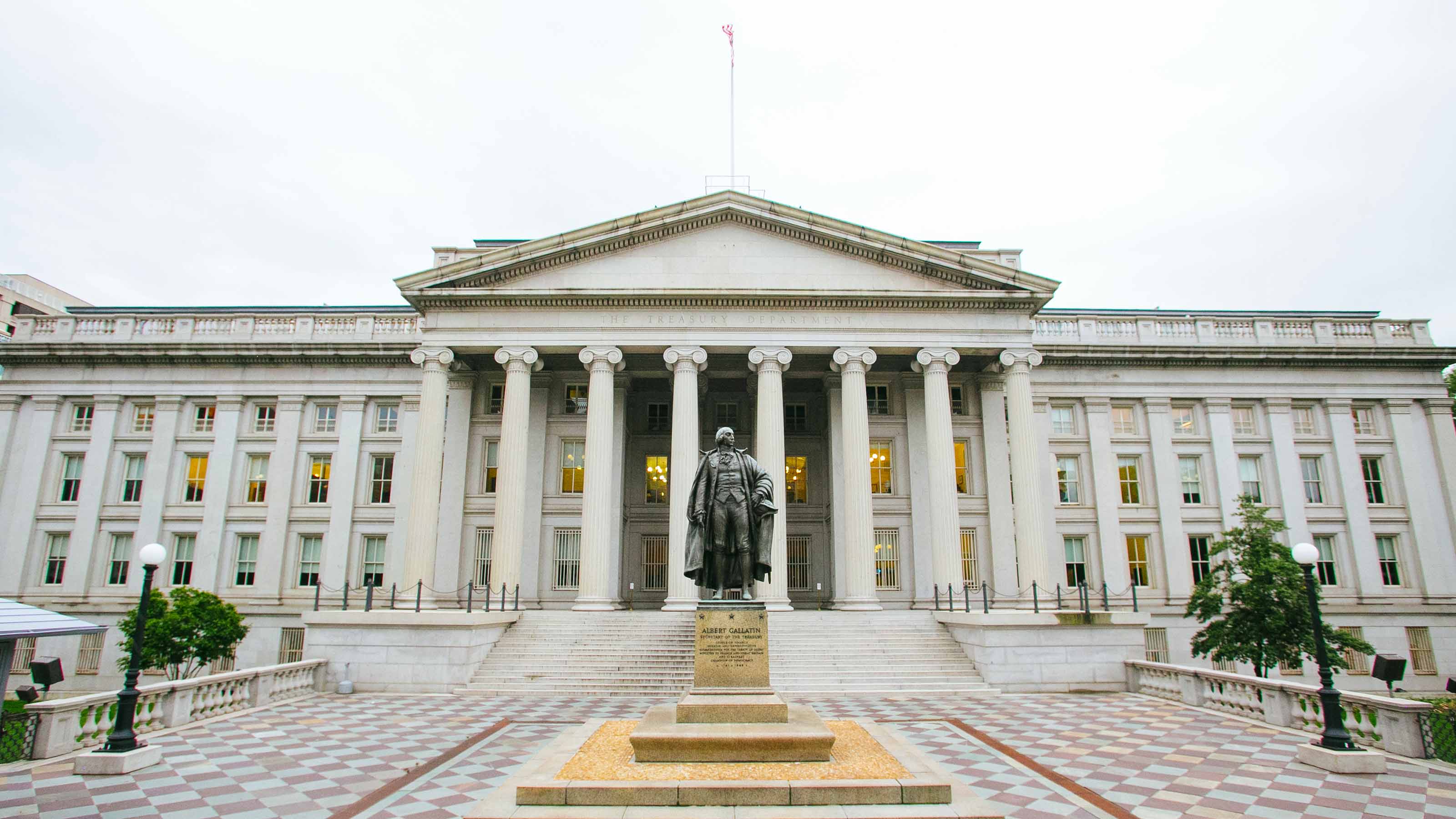Why Bond Yields Aren’t Going Up
Inflation, the great enemy of bondholders, is almost nonexistent, and demand remains strong for Treasuries and other high-quality, income-paying assets.


The Dow Jones industrial average is down 415 points when bond sage Sreeni Prabhu declares over the phone that “stock market volatility sure does help fixed income.” Although he believes the Federal Reserve’s plan to finally take short-term interest rates off rock bottom is correct, Prabhu doesn’t worry that such a move will torpedo the bond market. In plain language, he’s convinced that no matter what the Fed does with short-term rates, long-term rates aren’t going to change much because investors are so concerned about turmoil in the stock market. (Prabhu’s best idea, incidentally, is mortgage-backed securities, both government-backed and so-called non-agency securities. DoubleLine Total Return Bond (symbol DLTNX), a member of the Kiplinger 25, invests in both kinds.)
An hour later, with the Dow off 385 points, I ring up Kansas City bond strategist Dan Heckman. He seconds Prabhu’s view that no matter what the Fed does, bond yields will remain flat or even dip a bit because “volatile stock markets create a floor that supports bond prices” (bond prices and interest rates move in opposite directions).
One reason the Fed’s long-anticipated hike, the first since 2006, probably won’t sink bond prices is that the Fed isn’t really tightening credit; it’s simply reclaiming some of the extreme stimulus measures it used to combat the Great Recession. Beyond that, inflation, the great enemy of bondholders, is almost nonexistent, and demand remains strong for Treasuries and other high-quality, dollar-denominated, income-paying assets.
From just $107.88 $24.99 for Kiplinger Personal Finance
Become a smarter, better informed investor. Subscribe from just $107.88 $24.99, plus get up to 4 Special Issues

Sign up for Kiplinger’s Free Newsletters
Profit and prosper with the best of expert advice on investing, taxes, retirement, personal finance and more - straight to your e-mail.
Profit and prosper with the best of expert advice - straight to your e-mail.
And then there’s China. Prabhu, chief investment officer for Angel Oak funds, and Heckman, who works for U.S. Bank, have crowned China as the best friend of U.S. bond investors. The downshift in growth and other economic stresses in the world’s second-biggest economy buttress my contention that rates on high-quality medium- and long-term bonds in the U.S., Europe and the rest of the developed world will move little in the foreseeable future.
Worrywarts will always see disaster behind the headlines. The China horror movie goes like this: The country is a house of cards, full of zombie companies and insolvent banks. To rescue these walking-dead firms and buy social peace by paying wages to millions of people working at unnecessary jobs, the crony Communists in Beijing will cut purchases of Treasuries and draw down China’s $4 trillion in hard-currency savings. The U.S. Treasury won’t be able to find other big buyers to finance our debt, so T-bond prices will drop and yields will ascend. Main Street will join Wall Street in the soup as fear spreads that the days of affordable mortgages and cheap business credit are just about over.
Minimal impact. I don’t buy the doomsday scenario. The Chinese stock market is a manipulated joke. Although its economy is a force, China accounts for only 1% of our exports. Moreover, compared with almost every other place in the world, the U.S. is cooking. Gross domestic product in the U.S. grew at an impressive annualized rate of 3.7% in the second quarter. Kiplinger expects growth of 2.5% for all of 2015 and 2.8% in 2016. And this is being accomplished with almost no inflation.
It’s true that the U.S. bond market wobbled a bit over the summer, with the yield on the benchmark 10-year Treasury bond rising to 2.5%. For a while, all major bond categories briefly showed negative year-to-date returns. But as soon as China lit the stock market fire, the 10-year Treasury yield fell below 2% again. As of September 7, the 10-year yielded 2.1%. Look for the yield to stay in a narrow range the rest of the year. And if that happens, your bonds and bond funds will end 2015 in the plus column. Can’t say that about your stocks.
Profit and prosper with the best of Kiplinger's advice on investing, taxes, retirement, personal finance and much more. Delivered daily. Enter your email in the box and click Sign Me Up.

Kosnett is the editor of Kiplinger Investing for Income and writes the "Cash in Hand" column for Kiplinger Personal Finance. He is an income-investing expert who covers bonds, real estate investment trusts, oil and gas income deals, dividend stocks and anything else that pays interest and dividends. He joined Kiplinger in 1981 after six years in newspapers, including the Baltimore Sun. He is a 1976 journalism graduate from the Medill School at Northwestern University and completed an executive program at the Carnegie-Mellon University business school in 1978.
-
 Forget FIRE: Why ‘FILE’ Is the Smarter Move for Child-Free DINKs
Forget FIRE: Why ‘FILE’ Is the Smarter Move for Child-Free DINKsHow shifting from "Retiring Early" to "Living Early" allows child-free adults to enjoy their wealth while they’re still young enough to use it.
-
 7 Tax Blunders to Avoid in Your First Year of Retirement
7 Tax Blunders to Avoid in Your First Year of RetirementA business-as-usual approach to taxes in the first year of retirement can lead to silly trip-ups that erode your nest egg. Here are seven common goofs to avoid.
-
 How to Plan for Social Security in 2026's Changing Landscape
How to Plan for Social Security in 2026's Changing LandscapeNot understanding how the upcoming changes in 2026 might affect you could put your financial security in retirement at risk. This is what you need to know.
-
 What Fed Rate Cuts Mean For Fixed-Income Investors
What Fed Rate Cuts Mean For Fixed-Income InvestorsThe Fed's rate-cutting campaign has the fixed-income market set for an encore of Q4 2024.
-
 The Most Tax-Friendly States for Investing in 2025 (Hint: There Are Two)
The Most Tax-Friendly States for Investing in 2025 (Hint: There Are Two)State Taxes Living in one of these places could lower your 2025 investment taxes — especially if you invest in real estate.
-
 The Final Countdown for Retirees with Investment Income
The Final Countdown for Retirees with Investment IncomeRetirement Tax Don’t assume Social Security withholding is enough. Some retirement income may require a quarterly estimated tax payment by the September 15 deadline.
-
 Dividends Are in a Rut
Dividends Are in a RutDividends may be going through a rough patch, but income investors should exercise patience.
-
 Why Investors Needn't Worry About U.S. Credit Downgrade
Why Investors Needn't Worry About U.S. Credit DowngradeFitch Ratings The United States saw its credit rating downgraded for just the second time in history, but experts aren't worried about the long-term damage to stocks.
-
 Municipal Bonds Stand Firm
Municipal Bonds Stand FirmIf you have the cash to invest, municipal bonds are a worthy alternative to CDs or Treasuries – even as they stare down credit-market Armageddon.
-
 High Yields From High-Rate Lenders
High Yields From High-Rate LendersInvestors seeking out high yields can find them in high-rate lenders, non-bank lenders and a few financial REITs.
-
 Time to Consider Foreign Bonds
Time to Consider Foreign BondsIn 2023, foreign bonds deserve a place on the fringes of a total-return-oriented fixed-income portfolio.